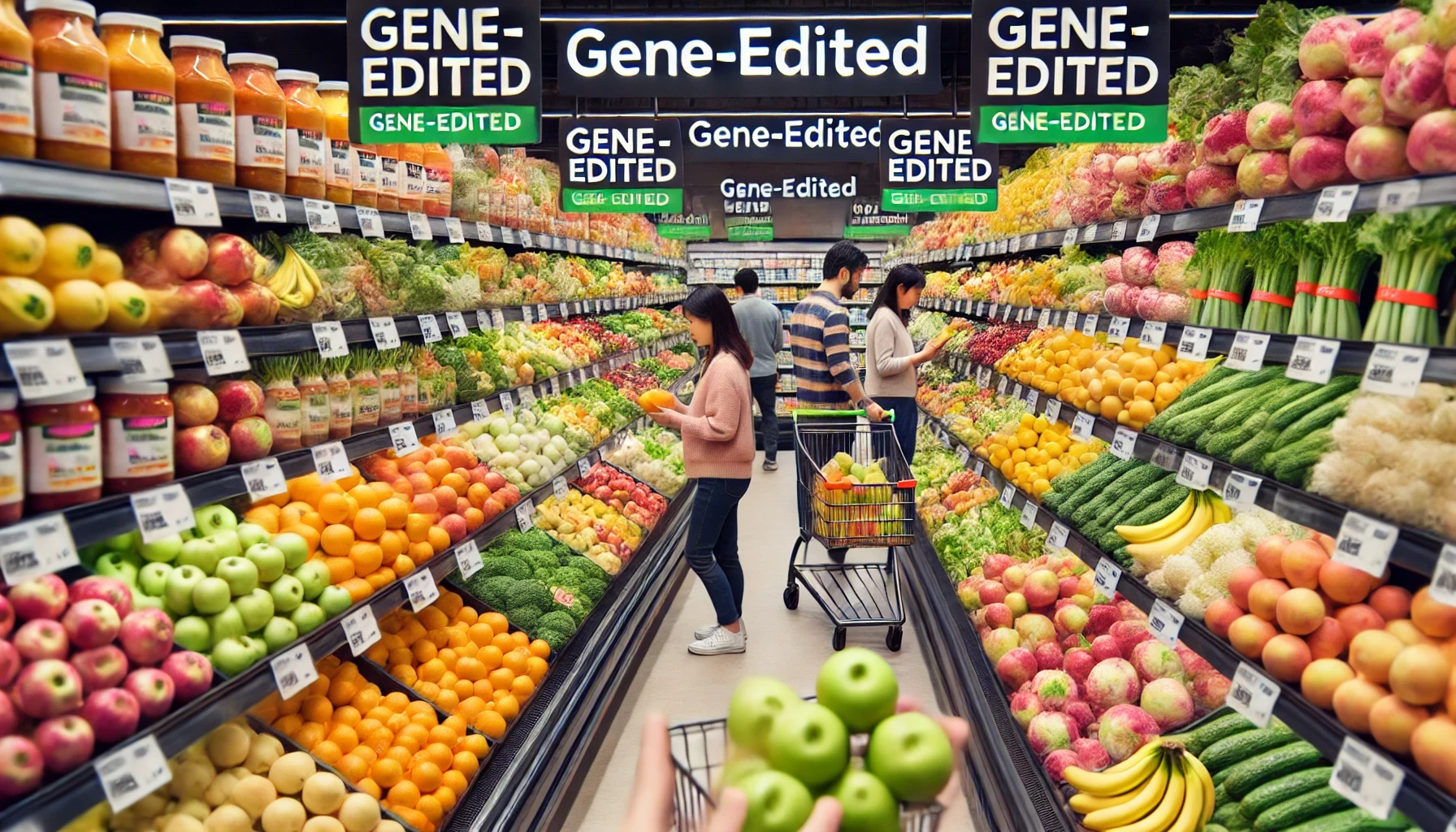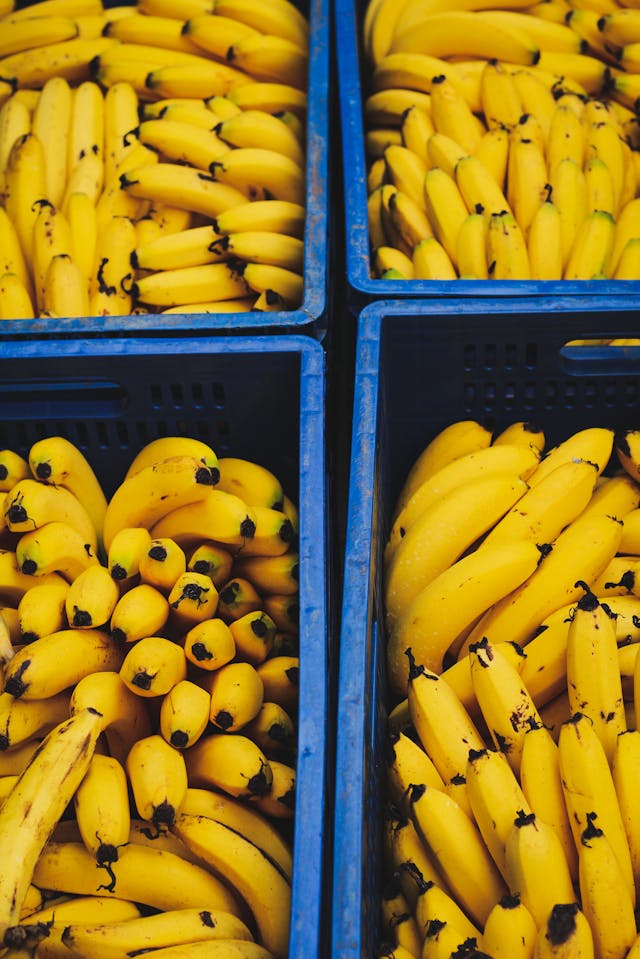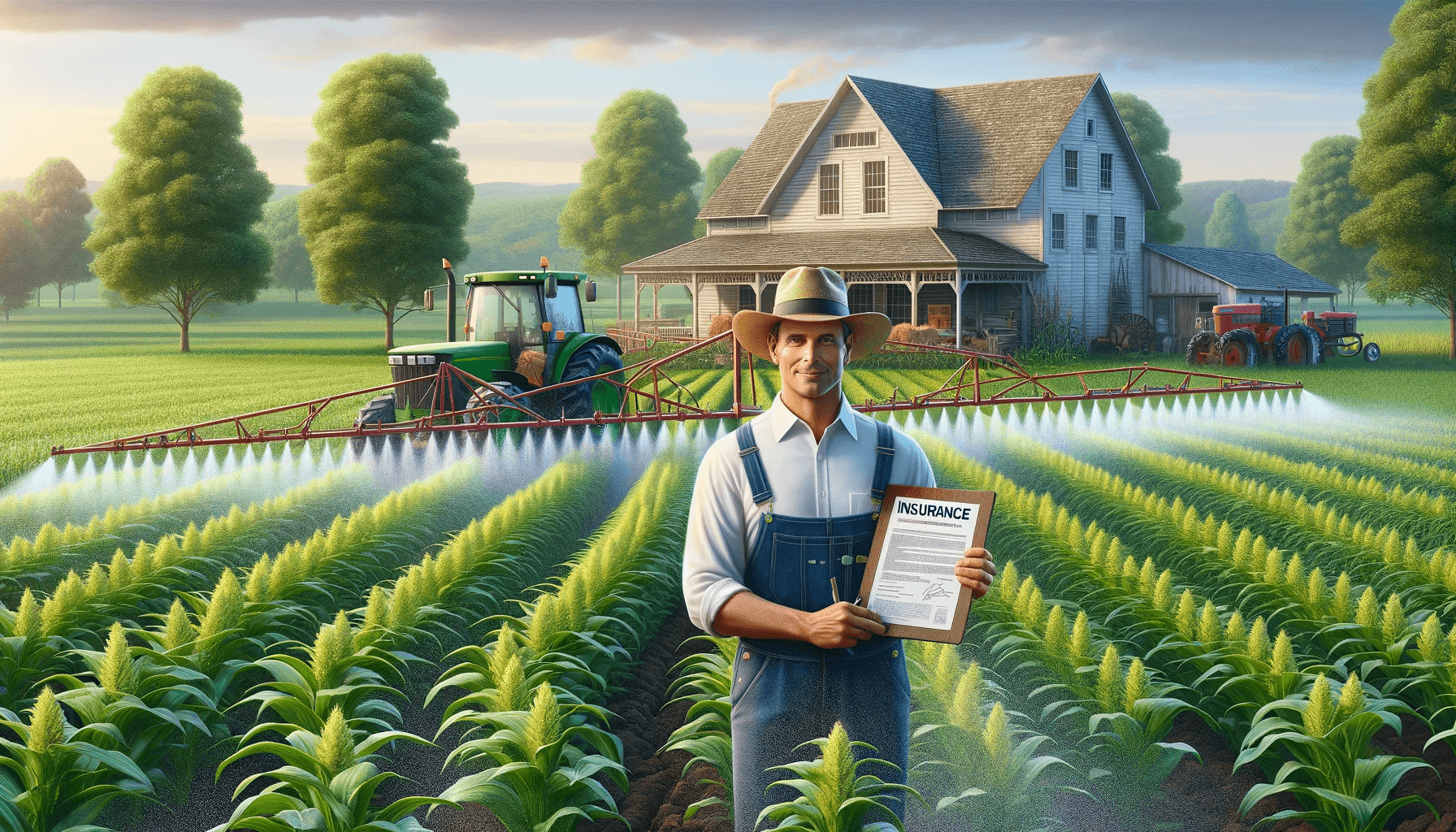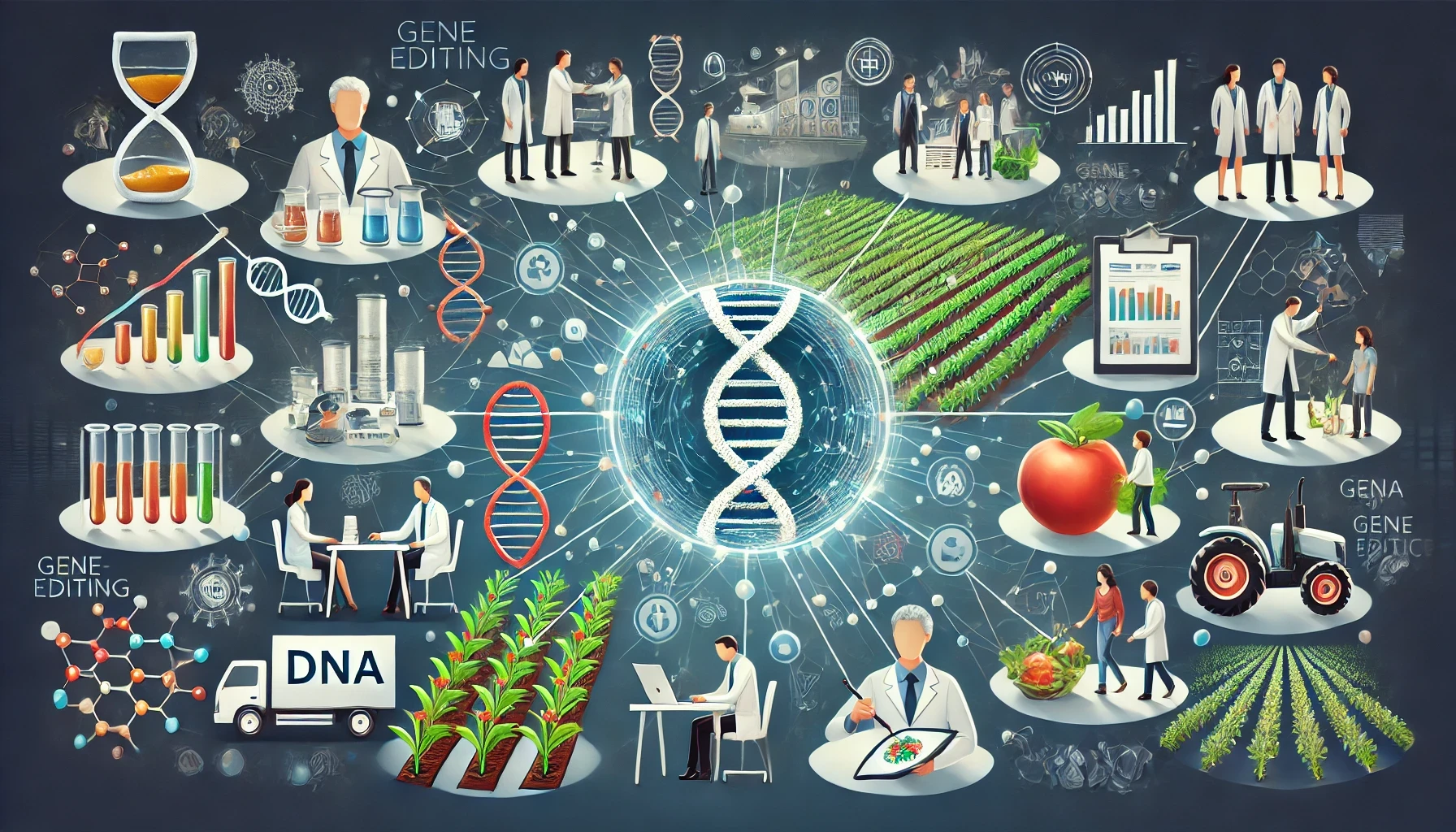Gene-Edited Superfoods: Addressing Global Nutrition
Farmers, scientists, and consumers advocate for gene-edited crops as a solution to global challenges, emphasizing the need for informed public dialogue and regulatory reform
Jul 29, 2024
[DALL-E]
On May 13, 2024, the University of Milan announced a breakthrough in gene editing. The first-ever field trial for a gene-edited crop in Italy—risotto rice tweaked to resist the destructive rice blast fungus.
“Today is a revolutionary day for biotechnologists,” said lead researcher Vittoria Brambilla at the time.
A month later, however, the crop was destroyed in a single night. Not by fungus, but by unknown vandals.

“The morning I was woken up with a phone call from the farmer, I was really disappointed,” says Vittoria, as I catch up with her in the aftermath. “It was the same feeling as having thieves come into your home.”
For Europe, it seems, the days of anti-GMO destruction of crop trials are not quite a thing of the past - even if gene editing is viewed much differently from a regulatory perspective.
It appears that while gene-edited crop trials were given the go-ahead politically, with widespread support from farmers, elements of the Italian public still need some convincing.
The Need for Crop Trials
Tom Allen-Stevens, farmer, journalist, and founder of The British On-Farm Innovation Network (BOFIN), is set to become one of the first people to trial gene-edited crops in the UK.
Working with the John Innes Centre and Rothamsted Research, up to 25 BOFIN farmers will grow gene-edited varieties of wheat to test potentially beneficial traits such as reduced post-harvest processing and increased grain size.
But the specter of field trial destruction, such as the one in Italy, leaves a nagging feeling.
“It is worrying,” says Tom as we discuss his pioneering work with BOFIN. “I thought those days were behind us. When the first GM trials came to the UK, many were trashed. “Some of the farmers who were taking part in them received death threats and intimidation. It was really nasty.”
He points out field trials are essential to determine whether the technology is viable and safe in the first place.
“This isn't about forcing someone to eat GM food. It's about gaining the understanding and the knowledge so that we can have an informed opinion on whether the technology is right for us.
“It’s absolutely fine to be against the technology and to demand choice and labeling. It’s a discussion we must have, but it must be based on good information. The only way we're going to have good information is to have those trials.”
Consumers Say Yes to Gene-Edited Foods
The risotto rampage was not the only setback for biotechnology recently.
The Philippines had become the first country to approve “Golden Rice,” a vitamin A-boosted variety that could reduce malnutrition and improve health, until Greenpeace blocked its use in court—an action many labeled “a catastrophe.”
Yet the response to the news from Italy suggests anti-GMO sentiment may well be a fringe perspective.
“It was amazing how much solidarity we got,” says Vittoria. “We got hundreds of emails from journalists, farmers, scientists, citizens like high school teachers, people offering support.”
And even though some countries are only just getting going, in the US and Japan consumers are already tucking into - and enjoying - gene-edited foods.
“We've taken the approach that fresh produce is nutritional, and the problem is we don't eat enough of it,” says Tom Adams, CEO of Pairwise, a company that uses gene editing to improve plants for consumers and farmers alike.
“We looked at things that have driven consumption of fruits and vegetables, and it really comes down to two things. One is availability, and the other is convenience.”

Think of things like year-round blueberries, seedless watermelons, and easy-peel mandarins.
With that in mind, Pairwise’s first product was a mustard green that was edited to remove a compound that leaves an unpleasant, wasabi-like taste in the leaves. Now, it can be eaten as a delicious salad.
Other projects include seedless varieties of blackberry, and cherry bushes that yield year-round. More available, more convenient.
Importantly, Tom says, the consumers love it.
“We started off with the idea that we've got to use gene editing to do something where people can feel a tangible benefit. Before we launched the salads, we served them up to thousands of people around the country. We were totally transparent about it.
“As a synthetic biologist, you'll be happy to know that most of them were positive about how technology was being used to make food more accessible to them.”
Tom also suggests that focusing on products, such as fruits, allows greater consumer choice.
“If you have seedless blackberries, there'll be seeded blackberries next to them. If somebody really is objecting to technology, they have the opportunity to choose it, or not.”
Whilst gene-edited foods are working their way to supermarket shelves in the US, over in Japan, you can buy super-tomatoes and even gene-edited fish such as red sea bream and pufferfish.
A few years on from their introduction, research suggests that clear consumer benefit has persuaded a once-GMO-wary nation to embrace these gene-edited products.
Bananas for Gene Editing
The sad irony of destroying a gene-edited crop trial, or blocking the growth of gene-edited foods, is that they’re a powerful tool to combat the ravages of climate change and malnutrition.

The world is undeniably heating at an unprecedented rate, and that is already exacerbating extreme conditions such as drought and flooding while driving pests and diseases into new territories.
Leena Tripathi, Director of the East Africa Hub of the International Institute of Tropical Agriculture (IITA), leads gene editing research at IITA. She says while gene editing is not a silver bullet, it will be helpful when developing climate-resilient crop varieties.
“Gene editing is one new added tool in our toolbox,” Leena explains. “The best advantage of this tool is that it is quite precise. For example, if you only want to get disease resistance, you don't change the taste.”
It can also, given the right information, speed things up a bit.
Leena works with critical staple food crops in East Africa, bananas and plantains in particular. Bananas around the world are blighted by fungal diseases. Bananas in East Africa are also stricken by bacterial wilt disease.
Their wild relatives come equipped with natural resistance, but accessing that is tricky.
“Breeders don’t usually use wild-type bananas,” explains Leena. “It takes a long time. We have done a lot of molecular work on these wild bananas to understand the molecular basis of bacterial disease, and disease resistance.
“We have good results in our greenhouses from gene-edited plants showing enhanced resistance to bacterial disease.”
The Hurdle of Regulation
Kenya is one of a suite of countries that have moved to differentiate the products from GMOs, and field trials for certain crops are already underway. Hopefully, that means Leena’s gene-edited bananas can get to farmers before too long.

Yet this isn’t the picture everywhere. For farmers, businesses, and scientists alike, regulation still poses a potential barrier to adoption at scale.
“A first step to getting gene-regulated crops closer to the farmer is the regulatory guidelines,” explains Leena.
“In Africa, four countries meet the guidelines—Kenya, Nigeria, Ghana, and Malawi. In these countries, if your gene-edited crop doesn’t contain a foreign gene, it’s treated as non-GMO.”
For Christine Shyu of Bayer, the need to compare gene-edited crops with GMOs is in itself a significant barrier.
“I think the biggest hurdle right now is applying the GMO mindset to gene editing,” Christine explains. “The regulatory and development costs are so high that it’s not very accessible.”
She argues that because the regulatory environment has been framed around GMOs, and it’s been particularly stringent in places like the EU, regulators are looking at that first rather than seeing gene editing as a breeding tool.
“We’re looking at GMOs and working out what doesn’t apply, instead looking at breeding innovation and asking what are the critical control points we should think about,” says Christine.
“Developers of gene-edited technologies come from companies big and small, as well as not-for-profit organizations. Having the regulatory barrier that high automatically screens out a lot of opportunities, which is very unfortunate.”
Lyle Ralston, also of Bayer, thinks lowering that hurdle will be vital as the world continues to suffer the worsening effects of climate change.
“Bayer is very focused on the impacts of climate change, and especially impacts of climate change on extreme weather,” says Lyle. “Whether it’s extreme heat or flooding, we want to develop crops that will perform better in these conditions—and also under sustainable management practices.”
For that to happen, academics must have the opportunity to bring innovative solutions forward.
“If we can get to a place where gene-edited crops are recognized not as GMOs but as new breeding tools, I think innovation will explode,” says Lyle. “It will enable academics and start-up companies to really be able to change the way we design solutions for farmers globally.”
Bringing Underutilized Plants Back
Companies like Bayer also see gene editing as an enticing opportunity to develop a more diverse set of crops—not just the high-yielding classics like corn and soybean.
“We’re really known for our row crops,” says Lyle. “But with gene editing, we can think about alternative, more resilient crops where—when the land is marginal, it’s too hot or too dry - you can’t grow corn and soy anymore.”
Enter grass pea, a little-known but potentially powerful weapon against a warming world and its soggy downpours.
“Grass pea is a really ancient crop. It's something that we've been cultivating for something like 8000 years,” says Peter Emmrich of the Norwich Institute for Sustainable Development.
“It was valued because it was highly nutritious. But from very early on, people learned that it was associated with this disease, neurolathyrism.”
The disease in question can cause paralysis of the legs and is prevalent in places like Ethiopia, where grass pea is cultivated as an important food crop. Despite the risks, grass pea is highly resilient to environmental conditions, being able to survive when all other crops fail.
“This is a really interesting crop for climate resilience, something that people are already depending on,” says Peter. “But this issue of toxicity has limited the use of the plants.”
Peter and his team therefore want to use gene editing as part of a breeding toolkit to understand how the grass pea plant makes the toxin that causes neurolathyrism, and how to breed plants to reduce the risk.
But not only that. Reducing the amount of toxin is a worthy cause, but it won’t be worth it on its own.
“We don't just want to fix this one problem,” Peter explains. “We want grass pea to be a more productive and more widely used crop that retains its original resilience.
“We are now developing a range of tools for breeders to improve grass pea, and we want gene editing to be one of them.”
Seeing is Believing
One thing is having a technology such as gene editing, with all its potential consumer benefits. It’s another thing entirely making it an attractive, and profitable, proposition to farmers.
“The farmers here in Africa are smallholder farmers. They’re very much interested in disease resistant varieties, but they are keen to know two things,” says Leena. “Whether the yield will be high, and whether they have to pay extra for the seeds.”
With any new technology there is an inherent risk of adopting it. For farmers the world over, that can translate into economic impacts.
As Leena says, for many, “seeing is believing.”
Vishaal Bhuyan, CEO of Aanika Biosciences, agrees.
“With things like climate change, the need for gene-edited crops is going to be huge,” he says. “There’s all this cool stuff that could be very impactful, but for farmers and food companies, it’s a different story.
“They can't take the risk to adopt and try new technologies. They’re working on thin margins, at the mercy of the weather.”

Vishaal’s strategy? Remove the risk by providing insurance for farmers who adopt gene-edited crops or products. It works hand in hand with Aanika’s molecular barcodes that add traceability to the food chain, speeding up insurance claims.
“We'll look at the new technology,” says Vishaal. “If it doesn't work, we're basically taking that risk out of your hands. If the technology fails, you'll get paid as if you're going to achieve the same objective.”
That aspect of risk removal is also an important element of the BOFIN network.
“Within agriculture, there's no first mover advantage,” says Tom Allen-Stevens. “Those people who take the effort to do something new, take on a new technology, they go through all the pain of working out how it works, but they don’t benefit from it.”
With funding from the UK government, BOFIN farmers are quite literally testing the ground for gene-edited crops.
“The extra question with gene-edited crops is: is there a market for it?” Tom explains. “I hope we can prove through bringing it into the field that we can get that talking point going, air any concerns that people have, and understand what areas of the market it works for.”
The Gene Editing Ecosystem
So what’s the outlook for gene-edited foods and global nutrition?
Clearly, getting them to market is just one obstacle, which includes the issue of technologies like CRISPR being under IP. Even when that’s resolved, it might be difficult to get seeds in the ground quickly.
In Ethiopia, for example, where improved grass pea varieties could benefit farmers and consumers, the seed distribution system is much different than in the US or Europe.
“In Ethiopia, seeds are highly traded in local markets. People save their own seeds from one season to another. There are no companies selling grass pea seeds,” says Peter.
“That puts hurdles in the way of getting an improved variety into the market—gene-edited or not. It’s more of a socioeconomic question. How do you develop a seed sector without trying to supplant the informal seed systems that do exist? Because they have a lot of resilience.”

As Matt Heaton, Project Manager at Seeds for Resilience, puts it, “different crops, same bottlenecks.”
Matt’s research into seed distribution suggests that the “formal” seed market struggles to bring even major staple crops to smallholders. In Uganda, for example, formal seed systems only reach around 20% of farmers.
It can be difficult for researchers to provide innovations through “Informal” systems, but there is potential for integrated seed systems that bridge the formal and informal markets, with farmers joining together to form “local seed businesses.”
“Local seed businesses are deliberately tasked with focusing on non-major crops, to complement rather than compete with the formal seed channels,” explains Matt.
“This is a nice model for research to engage with as it doesn’t require additional funding to maintain. If the new seeds meet farmers' needs and create demand, they persist.”
Seed markets aside—there is still the pure, basic research that needs to be done in order to be able to improve some of the more alternative and less studied crops using gene editing in the first place.
“More often than not, we still need a better fundamental understanding of complex traits before we can use gene editing to improve them,” says Peter. “It needs funding. If you ignore that, developments will only happen for the major crops and the lucrative traits.”
How Good Food Could Be
Between the rigors of research and regulation, wreckage, and risk, there’s a lot of reward to be reaped with gene-edited foods.
“I really want to see the farmers growing the gene-edited bananas in the field,” Leena reflects when I ask her what’s her dream. “Now, when the farmers see the disease, they have to uproot the crop.
“Many farmers are female farmers, that’s very labor intensive. So that’s my dream, seeing the disease-resistant bananas in the field. Seeing the farmers get higher yields with less labor.”
For Christine Gould, author of The Changemaker’s Guide to Feeding the Planet, gene editing is an integral part of a new, integrated food system.
“It’s the future of the sector,” says Christine. “If you really want to unlock the potential of regenerative agriculture, you need to look at a combination of soil health, farm practices, and plant genetics.
“Nutrition starts with agriculture. But it’s also about health and wellbeing and longevity.”
Vittoria, who is determined to continue generating crops fit for a changing climate, agrees.
“For me, it’s important that people eat the best food that they can get, compatible with the environment, compatible with the latest knowledge in nutrition,” she says. “Good quality food, with good protein, vitamins, antioxidants, no residues of pesticides.
“It has to be healthy. Whether it’s gene-edited, GMO, or whatever.”


















